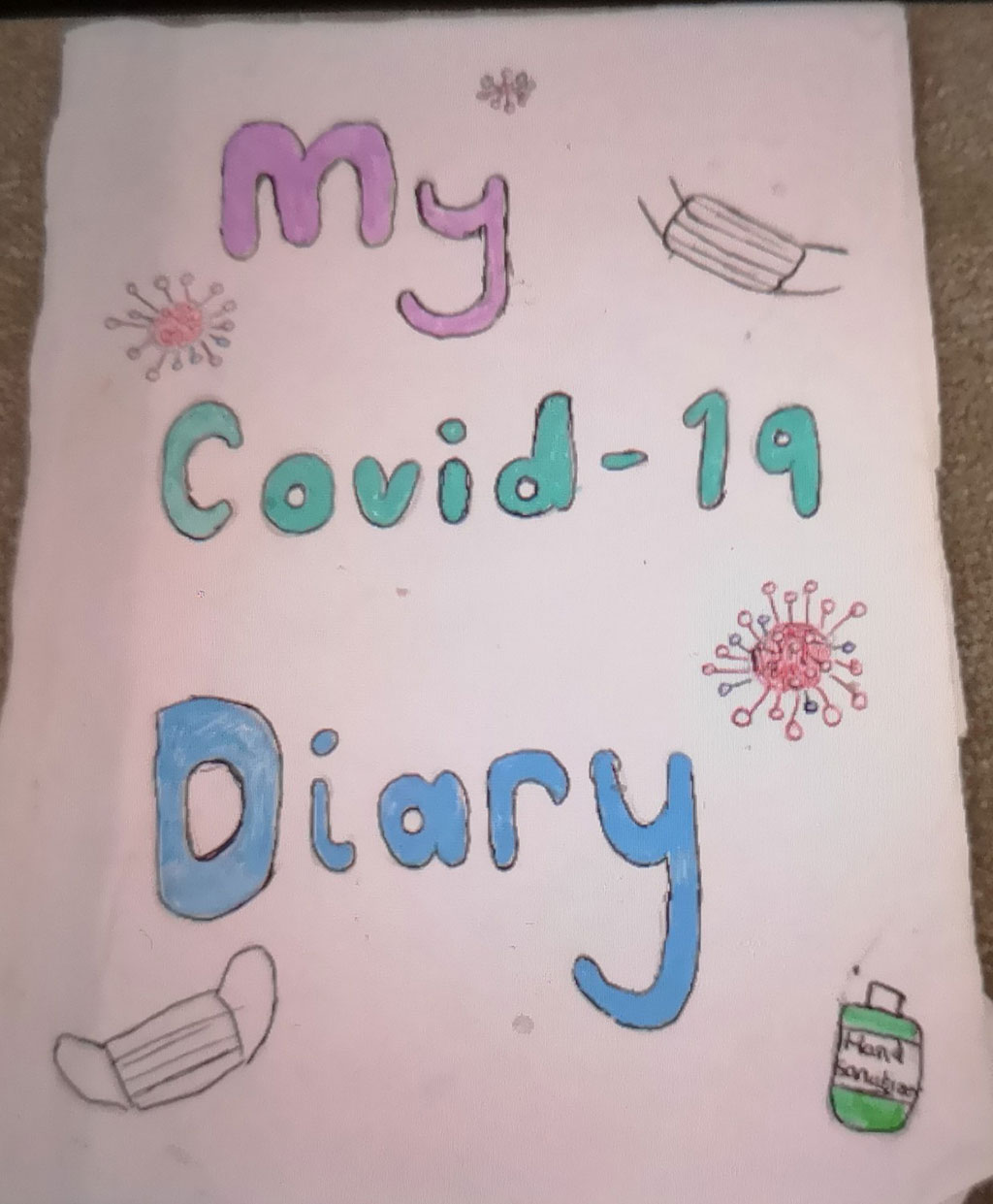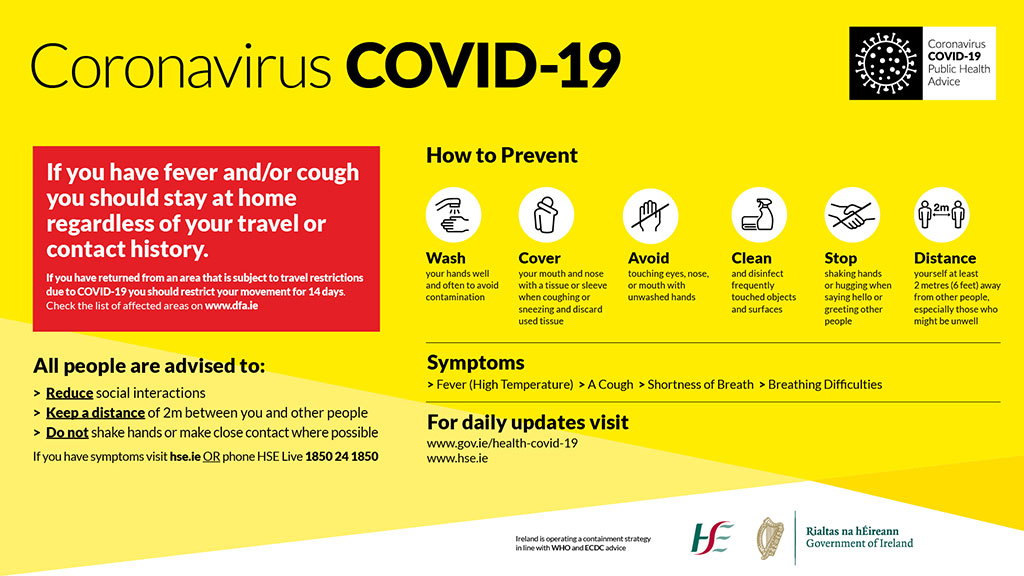 Orlaith Blaney, Chief Communications & Marketing Officer with Ervia outlines some of the key steps required when formulating an effective communications strategy during the Covid-19 crisis.
Orlaith Blaney, Chief Communications & Marketing Officer with Ervia outlines some of the key steps required when formulating an effective communications strategy during the Covid-19 crisis.
I’ve spent all of my career working in Strategic Communications in some shape or form, whether in Public Relations, in Corporate Communication, in the area of Visual and Graphic Design. I’ve worked in Brand Strategy, Marketing, Advertising, Digital, Social and Web and Search and I’ve also worked to ensure all internal employees are engaged and invested in what we are communicating and that they not only understand the communication but understand it clearly enough to be able to repeat it, articulate the message clearly, and ideally, advocate for it.
For anyone working in the communications business and who cares deeply about any of our core disciplines, we know that the key to unlocking effectiveness is ensure these disciplines, where relevant, work together to get to a good outcome. Nothing drives me crazier than one off bitty crappy tactical communication, without a clear strategy, devoid of insight, that’s too complicated that goes on forever and ever, and says nothing. It happens.
Strategic Communications is also at the core of effective and visible leadership. I have been watching, reading and learning over the last week about how to communicate better. Nothing is more insightful than learning how to effectively communicate during a crisis. There will be acres of academic articles, LinkedIn articles, books and perspectives from smarter people than me on this subject, however I wanted to take an opportunity to share my own personal observations on what has unfolded in recent weeks.

Over the last 9 weeks, I have been fascinated by the approach to Leadership and Communications during the Covid 19 crisis. From Leo Varadkar, The Taoiseach, Simon Harris, our Minister for Health, our Chief Medical Officer of the HSE, Dr. Tony Holohan, UK Prime Minister, Boris Johnson and the Chief Executive Officer of the NHS, Sir Simon Stevens, President Donald Trump and Dr. Anthony Fauci, Director of the National Institute of Allergy and Infectious Diseases.
I’ve tuned in to the retail communications activity from brands like SuperValu, Vodafone, Lidl, Dunnes Stores and Aldi and how they have handled their communication. I am also very appreciative of the plethora of consumer insight and information coming from Carat, Core Media, Fleishman Hillard, from Neil Douglas and Luke Reaper at Behaviour & Attitudes, from Richard Colwell at Red C and reports and articles in Irish Marketing Journal, Adworld.ie, Marketing Week and Adweek.
I’ve also delved into key insights from WARC, Gartner, from Rothco and MCCP and lots of other organisations who are trying to understand how we best communicate in these crazy Covid times and provide their own insights.
So, how do you start to build an effective communications strategy during a crisis and what matters most?
- Ruthless focus on outcomes informed by consumer insight and understanding, from the outset
Absolutely core to how to work with teams to deliver effective communications is absolute ruthless focus on outcomes. A focus on the basics. What are we actually measuring, what outcomes are we trying to achieve? What does success look like? We are hugely fortunate to have multiple sources of data from formal qualitative and quantitative research, media sentiment, social media sentiment, trended sales data and buying patterns, behavioural data, information on website traffic and the impact of search. All of this informs communications planning and drives effectiveness. And even more critical in a crisis is teamwork and collaboration.
There is no time for politics or power plays on a team faced with crisis management, particularly when lives are depending on you. You are highly dependent on your company’s CEO, MDs and Executive leadership teams to agree those outcomes in advance. This really helps to ensure focus and gives you your best chance of achieving success. You also need to be super agile in how you manage. Things will come up you don’t expect. You need to be able to move fast in responding and respond with real clarity.
- Crystal clear thinking on your agreed core communications messages
I am not close to any of the teams involved in advising the HSE and The Irish Government on how they kicked off the strategic approach to communications. One thing they did know is what core messages they wanted to get across.
Wash your Hands for 20 seconds. Cough or Sneeze into your elbow. No shaking hands. Then the introduction of the 2k restricted area (#2kfromhome) for your physical exercise moving to a 5k limit. Stay 2 metres apart whilst out in public areas. These messages were repeated across every single platform. The news, the press briefings, on television and radio advertising, in interviews and on leaflets sent directly to our homes. Then these messages were repeated on the social media accounts of our political and HSE leadership and the public got involved.
The asks were clear, consistent and aligned across all communications platforms. Some will they had the sole attention of the public and that the HSE and Government had the airwaves to themselves practically monopolising all media (apart of course from the #NormalPeople nudity rant on Liveline, the Johnny Logan versus Dickie Rock debacle or some hours spent on debating how Johnny Ronan wasn’t taking the Coronavirus seriously or letting Bewley’s off paying their rent). These other things took our minds off the killer virus, albeit momentarily.
- Access to subject matter experts who can communicate with credibility, authority and with empathy
Imagine, if you can, what its like to make decisions on which the lives of other people depend. Not easy. During this crisis we have had expert medical and academic professionals in abundance and political leaders too, who have stepped up to lead. We were truly spoilt with the quality of our medical leaders in the HSE and in our academic institutions. Dr. Tony Holohan (I’ll admit I am a superfan), Dr. Ronan Glynn, Dr. Cillian De Gascun, Professor Colm Bergin, Dr. Sarah Doyle as well as Dr. Catherine Motherway and the world-class Professor of Biochemistry and Immunology, TCD, Dr. Luke O’Neill.
The firepower of having an expert who can communicate with clarity and conviction and who is well briefed and well prepared is gold-dust during a crisis. Empathy is vital too. Jacinda Arden, the 39-year-old New Zealand PM has empathy in spades. It has served her well during not just the Covid crisis but also when two consecutive mass shootings occurred at mosques in a terrorist attack in Christchurch where 51 people lost their lives. Michael Joseph Ryan, an Irish former trauma surgeon and epidemiologist in infectious diseases at the WHO is also doing an excellent job. On the other side of the water to the West and the East, the leadership in the US and UK has been the opposite.

Just this week, Mark Ritson in Marketing Week said the UK governments message on leaving lockdown is fatally unclear and that Boris has to learn quickly that strategy is about sacrifice, communications is about clarity and leadership is about both. He described the new communication on the crisis as a ‘dogs breakfast made from equal parts insanity and idiocy. It was described as amateurish and non sensical. Stay Alert to what? How does one control a virus? You want me to save lives? How?
- Consistency of messaging and the power of a regular position on a trusted news channel and repetition
There is no greater way to earn trust with the public than having a clear truthful and consistent message that is repeated so often, it sticks. Also, having a place people go to that is the same every day, also helps. The use of the Dept of Health daily briefing format has been brilliantly executed. We know for the evening news on Virgin Media and RTE, we will get the death and cases numbers. Will Tony Holohan ever be able to forget his daily update to the media when this eventually passes? I can almost recite it myself. 23 deaths. 213 new cases. The male and female breakdown. The median age. The new cases split by ‘in the West, in the East, in the South’ and a report on the North of Ireland statistics. Every night I chat to my 11 year old niece Hannah on Facetime and she writes her ‘Covid diary’. It lists the deaths and cases every single day. Consistency and repetition build trust and confidence with the public and it seems even children are able to repeat the content.

We’ve also ensured #StaySafeStayHome hashtag, which now has its own emoji (along with #Tiger King and #NormalPeople also with their own emojis) was repeated everywhere on social media over the last 9 weeks, with some changing their names on their twitter account handle to ‘WASH YOUR HANDS’. Trump uses the hashtag strategy to major effect. The New York Times once wrote about his #CrookedHilary hashtag and its impact in damaging her election prospects and in more recent times, his use of #FakeNews. Repetition using hashtags on social media is core tenet of the Trump communication strategy.

- Be Concise
When leaders communicate during a crisis, how they communicate is really key. I like the point in the quote below about the ability to carve off the verbal fat. Speaking of verbal fat, people have the attention spans of gnats. Ask people who can’t even wait for a Tik Tok to end. We all need to think about how to get our messages across effectively in this cluttered complex world we live in. We can have a brilliant communications strategy but if no-one actually understands it, (and they can agree or disagree with our thinking), or engage with it, we run a high risk of failing. We must be able to share our messages simply, clearly, visually and these days, fast. Very fast.

- The impact of powerful design and consistent branding.
The Irish Covid communications strategy struck gold with its branded design approach to its visual communications. The black and yellow design for all HSE Communications is excellent. When we see it, we know that it is Covid related and that the message needs to be taken seriously and we trust it. The addition of the red bar during later poster executions reminded us of the importance of the communication. I think the consistent use everywhere on TV, Press Conferences, Posters, and on Social Media was another silver bullet in the communications strategy and its effectiveness.
There is no doubt there is still a long road to go. We have learnt many things about the importance of leadership and communication through the crisis so far and as I said out the outset, there will be more analysis to come. I am fascinated an curious about leadership, about confidence and conviction and being articulate and empathetic as you lead through the pandemic . I have picked just 6 observations in this article. There are many more.
As I finish writing, there is a sense out there that people are becoming bored, frustrated and tired of this virus and there are still many things we just don’t know about our future. I doubt in my lifetime I will ever experience anything quite like this. A the time of writing, 10 more patients died and there were 159 new confirmed cases. The total number of deaths is 1,497 and total cases have reached 23,401. I can tell you this, because my 11 year-old niece is doing the counting. This is a tragic and devastating time for so many families in Ireland and around the world. May those who have passed rest peacefully.
Orlaith Blaney is Chief Communications Marketing Officer (CCMO) Ervia and is a former CEO of McCannBlue and President of IAPI.




















